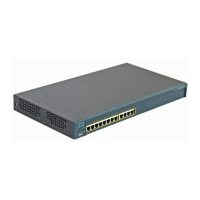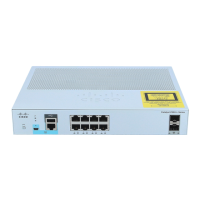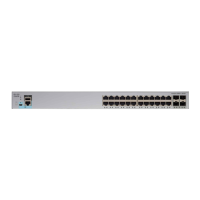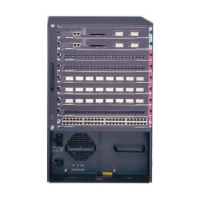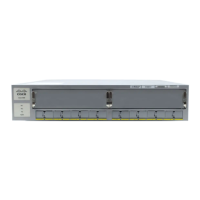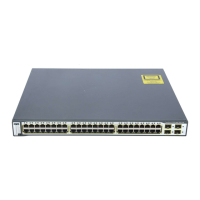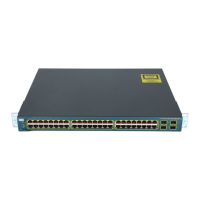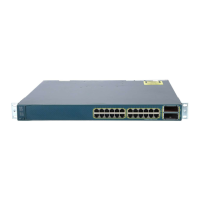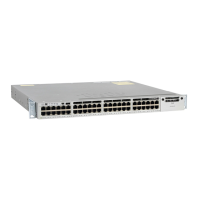Chapter 8 Configuring VLANs
How VLAN Trunks Work
8-40
Catalyst 2900 Series XL and Catalyst 3500 Series XL Software Configuration Guide
78-6511-05
Disabling a Trunk Port
You can disable trunking on a port by returning it to its default static-access mode.
Beginning in privileged EXEC mode, follow these steps to disable trunking on a
port:
Defining the Allowed VLANs on a Trunk
By default, a trunk port sends to and receives traffic from all VLANs in the VLAN
database. All VLANs, 1 to 1005, are allowed on each trunk. However, you can
remove VLANs from the allowed list, preventing traffic from those VLANs from
passing over the trunk. To restrict the traffic a trunk carries, use the remove
vlan-list parameter to remove specific VLANs from the allowed list.
A trunk port can become a member of a VLAN if the VLAN is enabled, if VTP
knows of the VLAN, and if the VLAN is in the allowed list for the port. When
VTP detects a newly enabled VLAN and the VLAN is in the allowed list for a
trunk port, the trunk port automatically becomes a member of the enabled VLAN.
When VTP detects a new VLAN and the VLAN is not in the allowed list for a
trunk port, the trunk port does not become a member of the new VLAN.
Command Purpose
Step 1
configure terminal Enter global configuration mode.
Step 2
interface interface_id Enter the interface configuration mode and the port to be
added to the VLAN.
Step 3
no switchport mode Return the port to its default static-access mode.
Step 4
end Return to privileged EXEC.
Step 5
show interface interface-id
switchport
Verify your entries.
In the display, check the Negotiation of Trunking field.
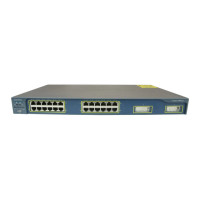
